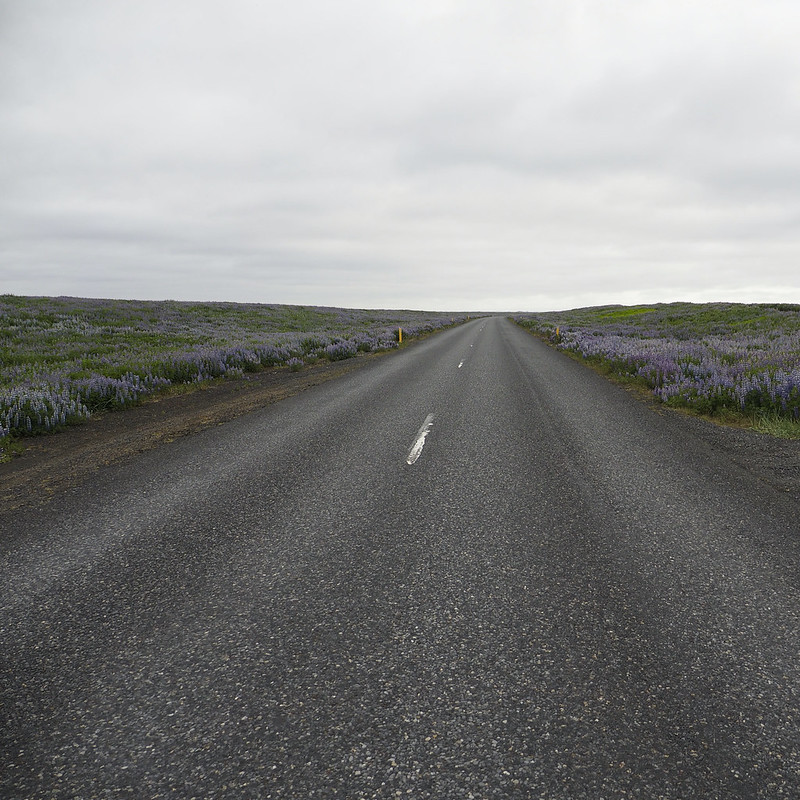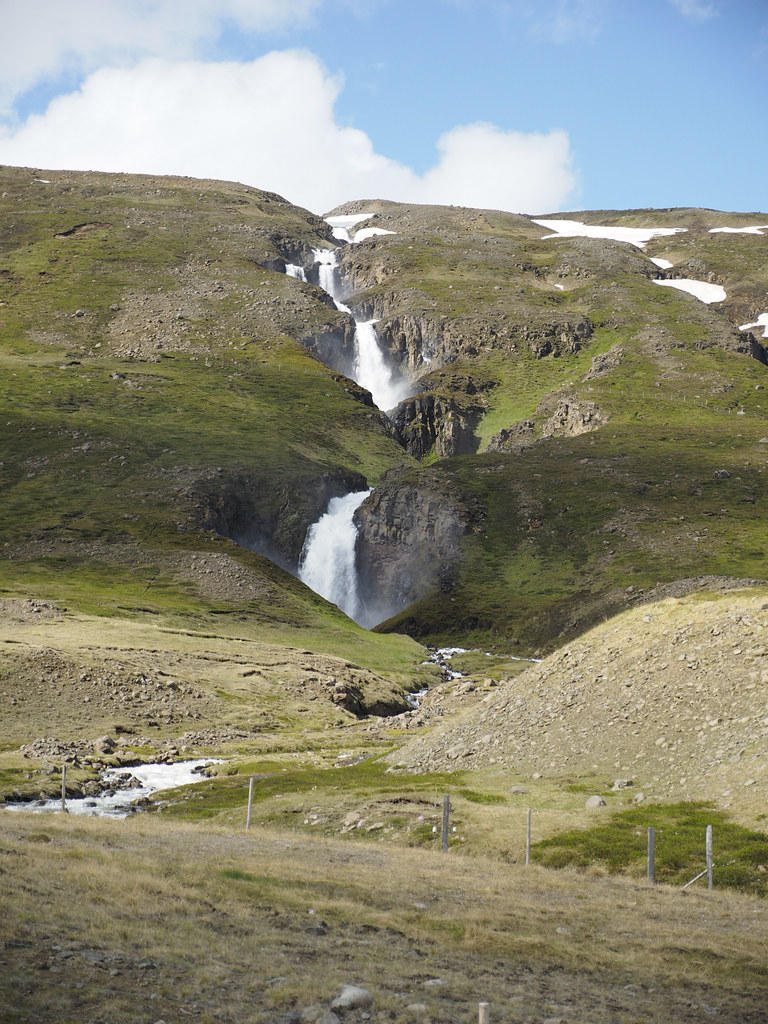- The only limited-access highway in the country runs from the Reykjavik suburbs to the airport.
- Most of the main roads outside of Reykjavik, including the Ring Road, are narrow double-lane roads with many single lane river crossings. Some of the Ring Road is gravel, as are many other main roads.
- I've been on narrow roads around the world where one car has to pull over to let the oncoming car pass. I've never been in a 4 mile tunnel that's a single lane, and has cutouts dug in the rock so you can pull over to let an oncoming car (or bus or truck) pass.
- Until 30 or 40 years ago, all of the roads outside of Reykjavik were gravel. I drove maybe 80 miles on gravel roads, which probably doubles my lifetime experience. I fully expected Thrifty, our car rental company, to ding me for dings (ha ha) from the gravel, but the agent smiled and said "no problems, have a nice day".
- The national speed limit is 90 kph (55 mph) on paved roads and 80 kph (49 mph) on gravel roads. There's relatively little speeding. I put the cruise control a couple over the limit and wasn't passed, and didn't pass anyone else, hardly at all.
- We drove about 1,300 miles in the 9 days we had the car, about 1/3 more than I had guessed we would.
- I've driven all over the US, Canada, the Caribbean, the British Isles, Australia, New Zealand and Western Europe. This was the hardest driving I've done. It is because the roads are so narrow, with no shoulder at all. Guardrails are also rare. You try passing an oncoming tour bus on a narrow curve on the side of a cliff and see how you feel.
 |
| The Ring Road, June 2016 |
- The Icelanders we met were uniformly friendly, and spoke good to excellent English. The biggest language problems we had were with guest workers from Eastern Europe or Asia, who supplement the labor shortage in the booming tourist business.
- It you don't like lamb or fish, your protein options will be limited. There is beef, but it's expensive and not always good. There are often vegetarian dishes. Chicken and pork are rare.
- Fruit in the hotel restaurants is hit-and-miss. They will usually have a limited selection which changes daily, depending on what they can get. Food markets seem to have a good choice, however.
- We noticed a number of Made in USA products. Ford cars, Chiquitta Bananas, Cheerios, Oreos (we saw a lot of food :-) ).
- Unlike Europe, but like the USA, water in restaurants is free and plentiful. We would usually get a pitcher on the table. And the water tastes great. Despite this, bottled water is sold in the markets. Go figure.
- All of the hotels were warm to the point of being stuffy, despite the heat being off for the summer. There is no A/C.
- With the notable exception of Myvatn ("the lake of midges"), there are remarkably few insects in the country. Perhaps all the insects just moved to Myvatn. There are no window screens anywhere.
- There are Subways all areound the country (although not really that many), and a few Quiznos. We saw one Dunkin Donuts in Reykjavik. No other US fast food chains.
- It rains often, but not always a lot. We only had a few days out of twelve with no rain. I don't think we had any days without significant cloud cover, even when it was "sunny". On the other hand, it's been raining for the last 16 hours as we sit on the plane waiting to depart. For the most part, people don't let it interrupt their lives.
- Every house and farm outside of the city has a name. It's not the name of the family that lives there, or anyone who ever lived there. The names are apparently permanent. There are street signs that point down the side road or driveway to the house. That's how you find things, not by a house number on the road: "Olaf? He lives at Stafafell east of Hofn".
 |
| Not the same as a street address, June 2016 |
- The description of menu items is often just an approximation, although it never says that. The menu might offer a shrimp sandwich. What you get is a egg salad with a couple of shrimp on top.
- The French fries are usually very good.
- Some of the local beers are very good: Viking Classic is a deep golden ale, and any of the Einstocks would make a good choice. The beers run $8-$10 in a restaurant.
- All of the wine is imported, usually from the US, Chile or Australia. That makes sense, as no fruits are grown in the country. Most of the wine we sampled was nothing special.
- The coffee comes in both American style and Euro style, e.g. Espresso. The American style coffee tastes just as good as the coffee in America: in other words, highly variable. We saw no Starbucks, and one DD.
- There are pretty much no trees. There are shrubs in some areas, which are only a couple of feet high. The local joke goes "if you find yourself lost in an Icelandic forest, just stand up". I found this to be true on a hike into the hills, where I never lost sight of where I started down by the Ring Road.
- We drove past endless numbers of farms. The only crop we saw that we recognized was hay. But it is spring, and the crops wouldn't have grown yet.
- There are some amazing sights to see: the major waterfalls, cliffs facing the ocean, the glaciers. But then you're just driving along and some farmer has a beautiful waterfall or other natural wonder in his backyard. And this is everywhere.
- If you read the description of the Blue Lagoon and think that it sounds very commercial and touristy, you're right. Though our Icelandic friend said she'd been there several times and enjoyed it.
- Everywhere you drive outside of the city, there are sheep and goats wandering around. Sometimes right on the side of the road. Sometimes (not often) crossing the road. They seem to treat the fences that define each farm as suggestions. You can be crossing the remotest, most barren lunarscape in the mountains on a dirt road and there will be three sheep grazing in the moss growing on the lava.

No comments:
Post a Comment
You must register with Blogger to comment. All comments are subject to moderation before posting.